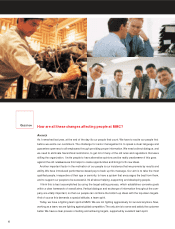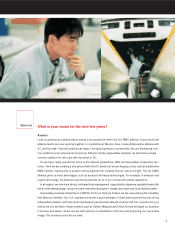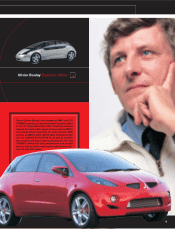Mitsubishi 2002 Annual Report Download - page 18
Download and view the complete annual report
Please find page 18 of the 2002 Mitsubishi annual report below. You can navigate through the pages in the report by either clicking on the pages listed below, or by using the keyword search tool below to find specific information within the annual report.
16
SPECIAL FEATURE—MANAGEMENT TALKS
TRUCK & BUS
What are the most important issues in improving profitability in this division?
ANSWER
The first point is that we have successfully completed the first stage of the Turnaround within our truck and
bus operations. The result is that we now have a more robust earnings structure. In the year ended March
2002, commercial vehicles returned to profit even though sales declined. Our next challenge is to boost
profitability further by carrying out the second stage of the FUSO* Turnaround. Started this year, this plan
aims to make the division more responsive to changes in market conditions.
Our alliance with DC offers the scope for several avenues of progress. First, we are now using DC sales
channels in Europe, where they replaced the role previously played by Volvo, and in South Africa—in both
cases for the sale of
CANTER
trucks. Second, we have upgraded the quality of our commercial vehicle
development programs through the application of the DC Quality Gate system. Third, we are studying the
use of standardized engines, transmissions and other components in conjunction with DC, as we take the
first steps toward modularization. Our alliance strategy will therefore help to reduce costs and expand our
presence in markets outside Japan, which will lead to sustainable profitability.
The aim of this common development process differs by product category. In heavy-duty vehicles, since
models vary greatly by region and application, the main goal is to reduce costs through sharing components
and systems. In small trucks, however, our strategy is to standardize specifications as much as possible
across all regions and applications.
QUESTION
Michio Hori Executive Officer
*FUSO: MMC truck and bus brand
























